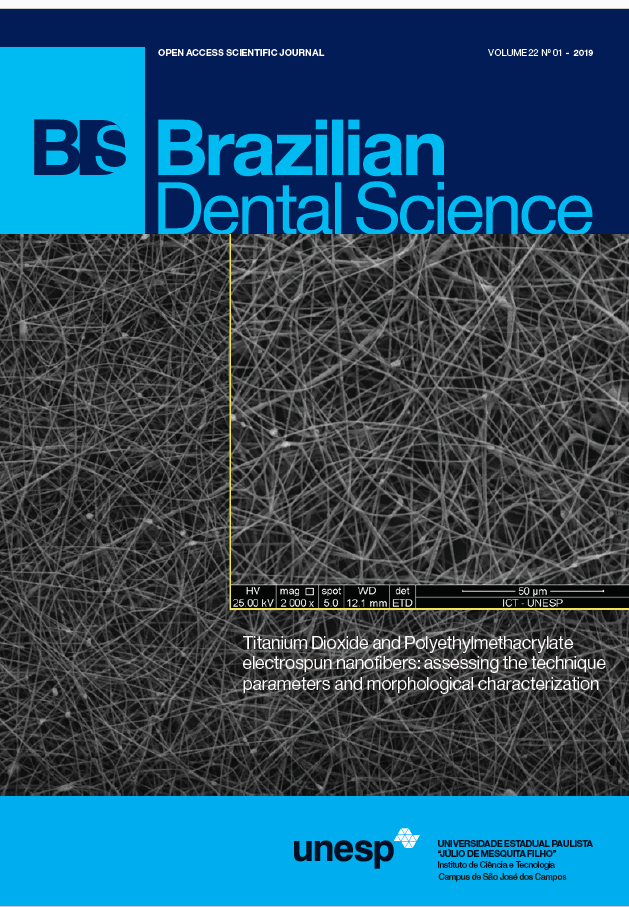Biaxial flexural strength of different types of monolithic zirconia
DOI:
https://doi.org/10.14295/bds.2019.v22i1.1696Abstract
Objective: This study was designed to evaluate the biaxial flexural strength (BFS) of different types of unshaded and shaded monolithic zirconia. Material and Methods: 120 monolithic zirconia ceramic discs were fabricated. They were divided into twelve groups (n=10), Group 1; Bruxzir unshaded, Group 2; Bruxzir shaded A2, Group 3; Bruxzir anterior white, Group 4; Bruxzir anterior shade A2, Group 5; Prettau unshaded, Group 6; Prettau shaded with A2 coloring liquid, Group 7; Prettau anterior white, Group 8; Prettau anterior shaded with A2 coloring liquid, Group 9; Katana HT white, Group 10; Katana HT shade A2, Group 11; Katana ST white, Group 12; Katana ST shade A2. All discs were milled using a dental milling machine, and had final dimensions after sintering of 15 mm diameter and 1 mm thickness. BFS was tested using piston on three ball technique. Results: One-way ANOVA revealed significant differences among the 12 groups. Tukey post-hoc tests revealed no significant differences between the groups 3, 4, ,7 ,8 11, and 12. However, they all had BFS values that are significantly lower than all other groups. Group 2 showed statistically significant higher BFS values when compared to group 3,4, 7, 8, 11, and 12 while it showed statistically significant lower values when compared to groups 1, 5, 6, 9, and 10. Conclusion: Increase in the yttria content in zirconia led to a decrease in its BFS. Shading of zirconia did not have a significant effect on the final strength of zirconia.
Keywords
Dental ceramics; Dental esthetics; Flexural strength; Shaded zirconia.
Downloads
Downloads
Additional Files
Published
How to Cite
Issue
Section
License
Brazilian Dental Science uses the Creative Commons (CC-BY 4.0) license, thus preserving the integrity of articles in an open access environment. The journal allows the author to retain publishing rights without restrictions.
=================




























